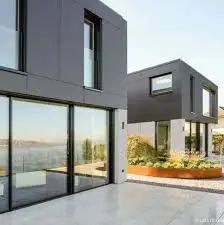
Aluminum cladding is the preferred option for modern architects and builders who need sleek looks, weather resistance, and energy efficiency in one high-technology finish. Commercial facade and housing estate constructions rely on aluminium cladding installation, which needs a delicate and skilled hand.
If installed properly, not only does it beautify the appearance of a building, but it also serves to be an added shield against external weather conditions. However, poor installation may provoke spending thousands on repairs, appearance damage, and ultimately, even structural compromise later on. Spending money on aluminium composite panels in Sydney includes just as much being aware of what not to do as you should be to know what you are doing.
Why Aluminium Cladding is a Top Choice in Modern Architecture
From skyscrapers to townhouses, aluminium cladding is renowned for being extremely durable and low-maintenance. It’s lightweight, corrosion-resistant, and has a wide array of textures and finishes. More importantly, aluminium composite cladding offers thermal efficiency and enhances fire safety when it’s installed correctly.
In regions like Sydney, where design trends take inspiration quite strongly from modern lines and minimalist fashion, aluminium composite panels in Sydney are frequently chosen for both aesthetic appeal and practicality. All of this is for nothing, however, if the cladding is not correctly installed.
Most Common Mistakes in Aluminium Cladding Installation
Errors at the start of your aluminium cladding installation will cost you hassle, money, and time later. The most common errors to watch out for are as follows:
Improper Surface Preparation
Skipping or rushing the preparation of the support surface is one of the first errors. Warping and misalignment can be caused by unstable or uneven bases.
Incorrect Panel Orientation
Aluminium composite cladding must be fitted with consistent panel orientation. Panels that are not orientated, however, make differences in sheen or texture very apparent.
Poor Ventilation or Drainage
Trapped condensation is the result of insufficient moisture control, which will cause the structure to deteriorate and reduce insulation effectiveness.
Not Providing for Expansion
Aluminium does expand and contract with temperature. Not providing for movement, however, will cause buckling or popping panels.
Cutting Corners on Fixings and Supports
Using the wrong fasteners or insufficient support framing can compromise the safety and longevity of the building as a whole.
Failure to Comply with Manufacturer Instructions
There are specific guidelines for the installation of every cladding system. Non-compliance typically leads to voided warranties and compromised structural integrity.
Selecting the Right Aluminium Composite Panel in Sydney
With all those kinds and companies out there to choose from, making the right selection of an appropriate aluminium composite panel in Sydney is a step in the direction to success. The perfect product is one offering strength, appearance, and regulatory compliance. Be guided by the following factors as you make your selection:
- Fire rating and compliance.
- Thickness and core of panels.
- Resistance against the weather.
- Protection or UV coating.
- Local compliance and manufacturer guarantee.
You’ll also want to source your materials from a reputable supplier. Quality ACPs in Sydney are manufactured to meet local climate demands and are backed by warranties that ensure peace of mind.
Tips for a Flawless Finish
A flawless finish doesn’t happen by chance—it’s the product of planning, accuracy, and quality workmanship. When you’re managing or responsible for a project of installing aluminium cladding, the following tips will help take the final result to the next level:
Use Experienced Experts
Always engage experienced contractors in installing aluminium cladding. Ask for their previous work, check them for feedback, and make sure that they are familiar with the actual material you are working with.
Prepare for Precise Cuts
Clumsy cuts on the panels are not only unsightly but also crack-prone. Professional installers offer neat edges utilizing quality cutting tools and accurate measurements.
Maintain Clean Workplaces
Filth and rubbish in between panels or behind the cladding will slow down proper adhesion and ventilation. Keeping the surfaces clean every step of the way ensures extended longevity.
First Priorities Are Safety and Compliance
Never cut corners on safety. Make certain your cladding solution complies with current building codes and specifications, especially in commercial or high-rise settings.
Do Not Rush the Job
Rushing will lead to uneven spacing, misalignment, or omitted sealants. Double-checking placements and measurements will pay off in the end.
The Bottom Line: Get It Right from the Start
Whether you’re refreshing a building’s exterior or starting from scratch, aluminium composite cladding offers a stylish, resilient solution—but only if done right. From selecting quality materials like ACPs in Sydney to avoiding preventable errors on-site, every choice plays a role in the final outcome.
Take the time to study materials, invest in the right professionals, and bet once more on precision. With this, your finished façade will not only be visually flawless but also long-lasting and strong.
